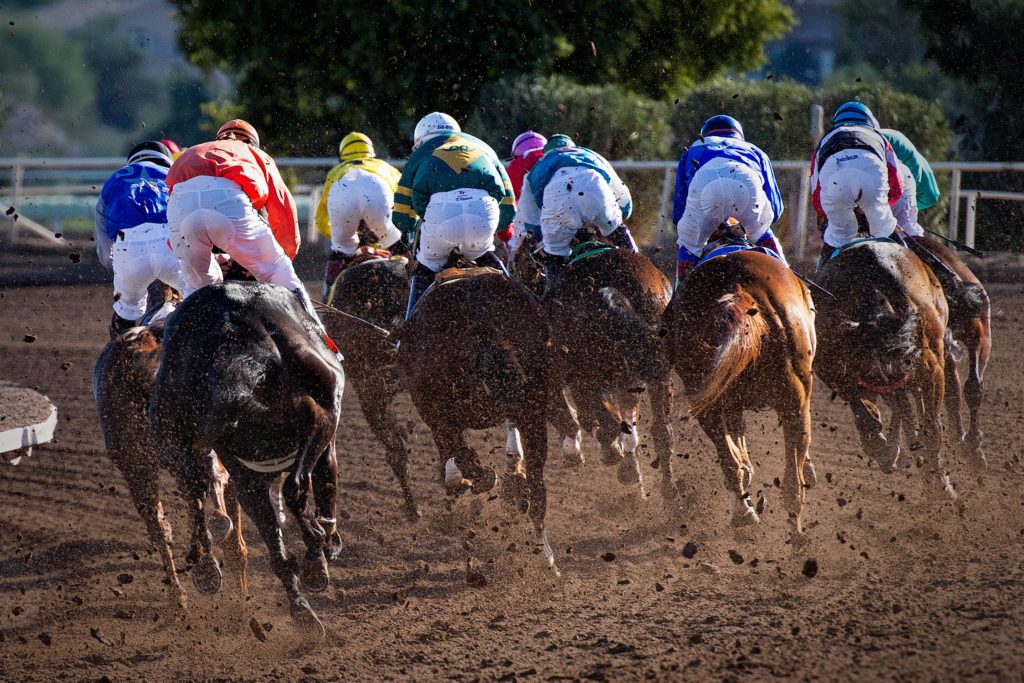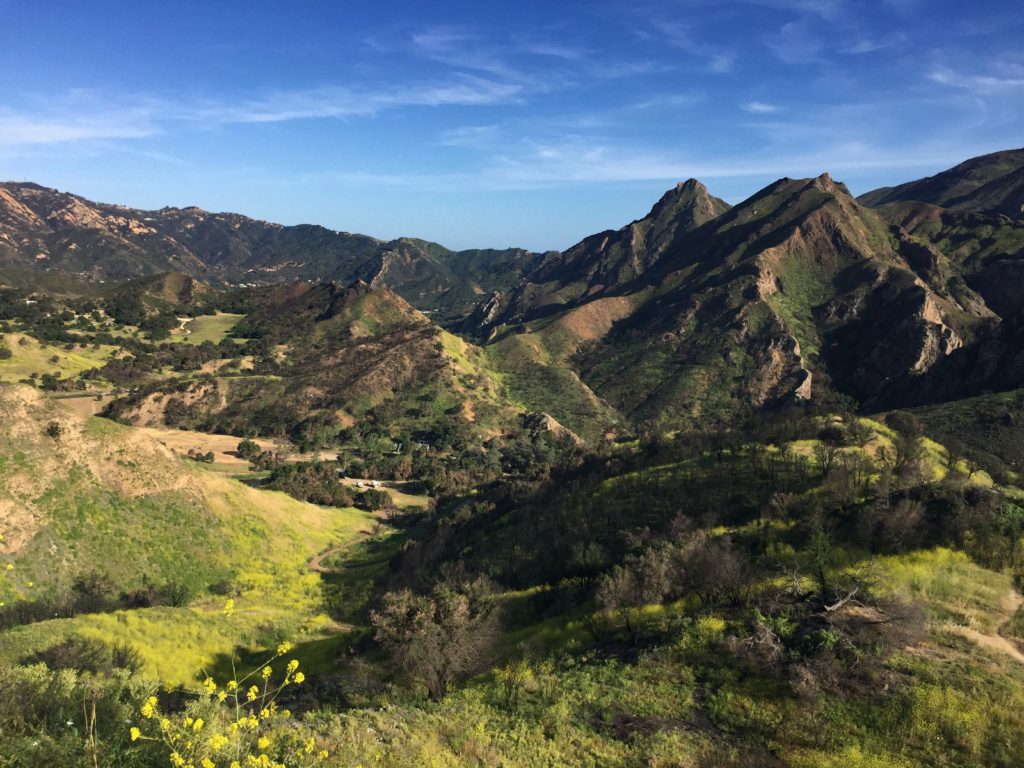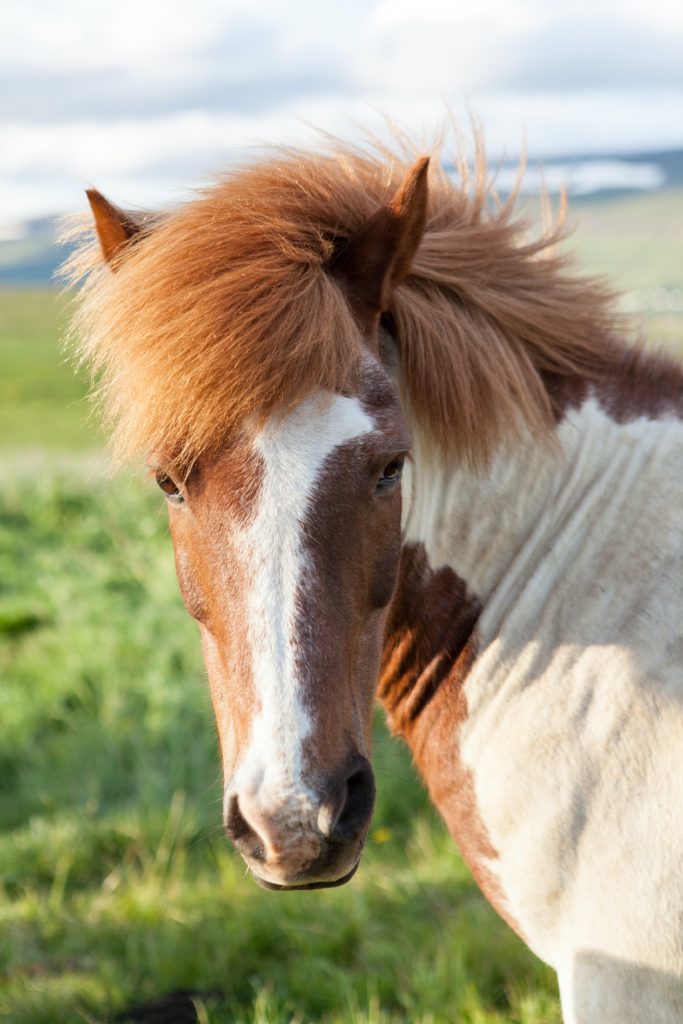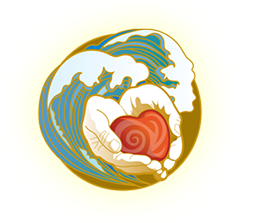
What really stood up in my ears listening to her stories, was the way she was in tune with her horses. She had been a professional horse jockey. Though cautious when not on horseback, she had ridden faster than the wind across many a finish line. From the way she spoke of her racing days, she was proud of them but she emphasized that the horses were the ones who carried her to success. Her love for horses was palpable.
Perhaps she was a horse, this human. She was thin and tall with flowing auburn hair that she tossed from side to side like a mane. Her joints were big boned and flexible, except for her neck, which was too rigid and always a little ahead of her body. She was both strong and fragile. Like horses, being scared seemed to be an integral part of her makeup. She was always on the lookout for anything that might trip her up and her eyes darted at the slightest sound. You didn’t have to look too closely to see that she was ready to run.
I don’t know if she was more human or horse, but she was the most confident in a tabletop position on horseback at high speeds. Her neck seemed to still have the finish line in its sight, but her jockeying days were over. Her professional success had cost her physically, and numerous injuries meant she had no choice but to leave the sport. She spoke with longing about the horses she had left behind and the farm where she had trained. In just a few sentences she conveyed so much detail, that I could see the long white fences running across the fields, smell the Spring flowers and taste the dust of the horse track on my tongue.
I had once loved to ride too. The more I listened to her, the easier it became to feel and remember being on a horse I had long ago left behind. I rode Shawnee twice a week for a year from the Summer I was six to the Summer I was seven. Through the gift of her words and the depth of her love for all equines, I found my way back to a a particular road in a dusty chaparral and eucalyptus canopied Southern California canyon. There was turn in the road, after which it opened up wide. Shawnee loved to start cantering there. Decades later, standing with my horse friend in our classroom, I felt the joy and exhilaration of the first time Shawnee’s canter turned to gallop, enveloping and enlivening my body. For a few delicious moments I was on Shawnee again, running like the wind. I realized Shawnee was still cantering down the trails of my childhood, and suddenly with a kick and a nudge galloping through my soul.
Not long after that magical day in my childhood, I’d lost horses and riding too, through a different set of injuries. That’s a story for another time.

When we met in the early 2000’s, my horse friend was a master at her sport and I was new to mine. She had found significant relief from her head and neck injuries through Biodynamic Craniosacral Therapy and wanted to pursue it as her new career. I was a few years ahead of her on the journey and was an assistant in her Biodynamic Craniosacral Therapy practitioner training.
We discovered our mutual love of horses in the first few days of class and talked often. In one of our conversations, she asked if I could give her a session, something teaching assistants did regularly with students outside of class. I told her where my office was, but she insisted I come to her condo. I don’t remember why she couldn’t drive to me, but it had something to do with her partner. She spoke so highly of him, how amazing he was and how in love they were. But in person he wasn’t at all what her words had led me to expect. When he opened the door, he seemed instantly wary of me, and I returned the sentiment. He didn’t want to let her out of his sight in their own home. Theirs was a kind of glue and dependence that turned my stomach.
She began to tell me all the issues with their condo. They had recently purchased it, and almost immediately discovered serious problems. Every attempt to resolve the issues with their home had so far only made them worse. The ongoing crisis was clearly deepening their dependence on each other.
Though she didn’t say it this way, her words explained how the physical space they were in wasn’t safe, and her actions showed me that there was a much deeper lack of safety too. I could see that she didn’t recognize the lack of safety she lived with and that lived inside her. I could see in her what was still invisible to me in my own life. Like her, I thought I knew what safety was, and I thought that the man I lived with was safe. I had even married him. Something I wasn’t ready to see or deal with felt familiar in her home. Something that was simultaneously ordinary and made me want to run.
In my marriage, the conflict between staying and leaving swirled and tightened in my chest on a regular basis, like a trapped fly buzzing at the window. Like hers, my relationship was one big ongoing crisis. My home was not a place where I could settle, but a place where I was settling for less than I had hoped for.
Both our nervous systems were moving at high speed without moving — like toy trains that had run off the tracks but were still humming away in place on the carpet. We both lived under mountains of immobility and terror inside our own bodies. The men we chose in no way lessened our load. Deep inside, we were both running at breakneck speed. The term comes from riding bikes and could certainly apply to horse racing. When someone goes dangerously fast and is thrown off what they are riding at breakneck speed the impact can easily break their neck. Or shatter their world.
We had both lost our horses and were holding tight to the men in our worlds.
I set up my table in her living room while her man retreated reluctantly to his office. I asked her where she would like me to begin. She began talking about her neck, the pain she was in there, and the various injuries. I knew enough to first make contact somewhere else, not go straight to the challenge. But I was being affected by the environment in more ways than I realized at the time and didn’t notice that I skipped my own reliable sequence.
Within the unsettled reality of her home, I settled as best I could at her shoulders. Then, after asking permission, I put my hands on her neck. I instantly felt like I had put my hands on cold marble. A feeling I recognized and felt from every piece of marble I’ve ever touched. It’s not like I go around touching marble, but marble is memorable. Cold, almost wet. Smooth. Structurally solid.

I was no Michelangelo, but like him, once my hands were there, I wanted to help her neck to escape from the marble. I wanted her to get out, to find to a place where she could let down and be safe. Instead of settling more in the first few minutes after making contact as I usually do, I became increasingly anxious. As I held her marble neck, I fell head and neck first into fix-it mode. I tried everything in my toolbox, every trick I knew to “make” her neck change. Nothing worked. Something was wrong and I began to think that it was my job to fix it. I dropped into the well of my own sense of failure and inadequacy, and that just made me try harder. As my urgency increased, my ability to discern what was hers from what was mine jumped the fence and ran like a trapped mare galloping towards the hills.
My chest tightened and I forgot where my feet were. Feeling increasingly desperate, I bore in like a drill seeking to blast away what I didn’t think should be there. Using a drill to get to something softer is violent. An oilman would say drilling is the only way to get to the juice. But man, ain’t no woman softened by demand.
My time in fix-it mode was probably less than fifteen minutes, but it felt like hours. I felt useless. We are all culturally trained to meet other’s expectations. And as therapists, we are expected to get results. All I was getting was a stronger sense of marble. I swam hard in her urgency, in large part because it matched my own. I had completely left the shore and was far out to sea, resonating with all the years in both our stories where we had fallen off the horse of our own knowing.
But while I felt lost, the places in both of us that needed no fixing knew exactly where they were. Listening to the body’s wellspring of capacity to facilitate its own healing is what Biodynamic Craniosacral Therapists do. Choosing to follow the path of embodied knowing and keeping our feet on it each session as best we can, grows the muscles to trust it. This capacity is not part of Western culture, so it is often met with disbelief and ridicule, even within a new Biodynamic therapist’s own mind and body. When we first encounter this deeper way of seeing and knowing, we doubt it. Doubting our knowing and leaving it behind is what our culture repeatedly teaches us to do.
That day in that horse woman’s unstable home, after far too long trying to rescue her neck from its marble casing, the bone-deep inherent knowing that I will always be a student of, muscled her way through my simmering frustration and into my fingers. A thought dawned the way water boils on the stove, suddenly and loudly — Her neck felt safe as marble! She had flown over hurdles and off horses so many times that turning her neck to marble made sense — so much sense. “That’s Brilliant!” I thought. “What a smart move!”
The moment I marveled at her body’s intelligence, the marble began to melt, first into something akin to ice cream and soon after into skin and bone. Her neck muscles began to unwind in my hands and her head turned gently. She took a beautifully deep breath. Electricity ran down her arms and legs and they trembled in response. Her body sank deeper into the table and my feet landed solidly on the floor of her house for the first time.
When a body feels safer, it changes. It doesn’t matter how long the feeling of safety lasts. What matters is arriving in a safer place. The kind of neutral presence and support Biodynamic Craniosacral Therapy and other healing arts with indigenous roots[1] cultivate on the journey, doesn’t make what is unsafe safe, but it does bring a person’s nervous system opportunities to experience feeling safer.
Supporting inherent knowing is ancient forgotten pathway practiced by many cultures in other times. We are not currently living in a world that honors this way, and our culture appears to be literally banking on our amnesia.[2] But the memory of this way of knowing is in our bones. And what is in our bones will always find a way to be known.
She felt great when I left and thanked me profusely for the session.
I didn’t stay in touch with her after the class ended some months later. I know that if she’s still alive, that moment of safety on my table, and the countless others her body has found are also still alive in her nervous system. I hope her neck has softened and she is well loved by a man who honors her. And I know her horses, whether racing or at rest, are always with her.

[1] All lineages of Craniosacral Therapy can trace their roots past Osteopathy, to Cherokee, Shawnee and other Native American tribal traditions passed hand to hand for generations.
[2] Though it has been nearly 20 years since that day I sat with that beautiful horse woman’s marble neck, I’m writing this less than a week after a United States Supreme Court leak confirms the staying power of misogyny and threatens to undo centuries of women’s rights and empowerment.
Also published on Medium.

